Do metal properties have anything to do with polishing? Let's learn about the properties of iron (carbon steel), stainless steel, and aluminum and how to polish them!

When you hear the word "metal," what first comes to mind?
Are you familiar with steel or stainless steel?
There are many different types of metals.
Iron, stainless steel, aluminum, copper, and many other metals are used in a wide range of everyday and industrial products.
The reason why the above metals are so frequently used is deeply related to the properties of each metal!
Table of Contents
1. What kind of metal is iron? Is it true that it is the best material for grinding and processing?
2. What are the characteristics of stainless steel? Is it more rust-resistant than other metals but less suitable for polishing?
3. Is aluminum difficult to polish? Advantages and disadvantages of using aluminum
4. Offers the best abrasives for polishing iron (carbon steel), stainless steel, and aluminum!
5. Let's understand the characteristics of metals and grind more comfortably!
1. What kind of metal is iron? Is it true that it is the best material for grinding and processing?
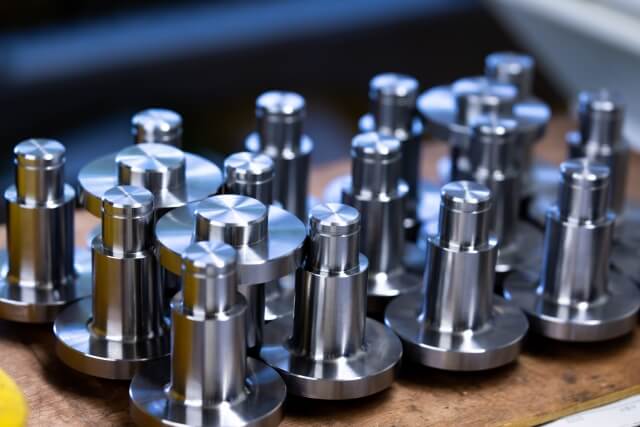
Iron is undoubtedly one of the most well-known metals.
In fact, we are surrounded by steel products.
It may come as a surprise to many, but there are actually no pure iron, or 100% pure iron products among them.
This is because pure iron is very easily oxidized and is not suitable for processing or use.
All of the iron products we are familiar with are alloys (containing more than one metal), which are made by mixing carbon and various other substances to reduce the purity of the iron, making it suitable for processing and use.
Have you ever heard of the term "steel" (kou) as opposed to iron? Both iron and steel are made from iron ore and are composed of iron and carbon.
However, the amount of carbon contained in iron and steel differs. Steel has a higher carbon content and is a stronger alloy than iron. For this reason, steel is sometimes referred to as "carbon steel.
Discussed in terms of carbon content, the steel is classified as iron if it contains less than 0.02% carbon and steel if it contains between 0.02% and 2% carbon.
Steel is one of the most commonly used metals because of its superior strength and tenacity (called toughness) compared to iron, as well as its ease of processing.
The strength of iron can be adjusted by heat treatment (annealing and quenching) in addition to changing the carbon content.
Thus, iron is a very easy metal to handle.
Advantages of iron (carbon steel)
・ Easy to manipulate strength
・ Easy to process
Iron (carbon steel) can be freely adjusted in terms of its strength, hardness and properties by adding other metallic elements or by heat treatment.
The ability to weld is also a major advantage in terms of processing.
・ Abundant and inexpensive iron ore used as raw material
Disadvantages of iron (carbon steel)
・ Easily rusted
Simply leaving it in the air at room temperature will cause rust.
If you are having trouble with rust removal, check out this method
Can rust removal be done by poliSankyo Rikagaku Productsnefits and methods of rust removal. - Sankyo Rikagaku Products (fujistar.com)
2. What are the characteristics of stainless steel? Is it more rust-resistant than other metals but less suitable for polishing?
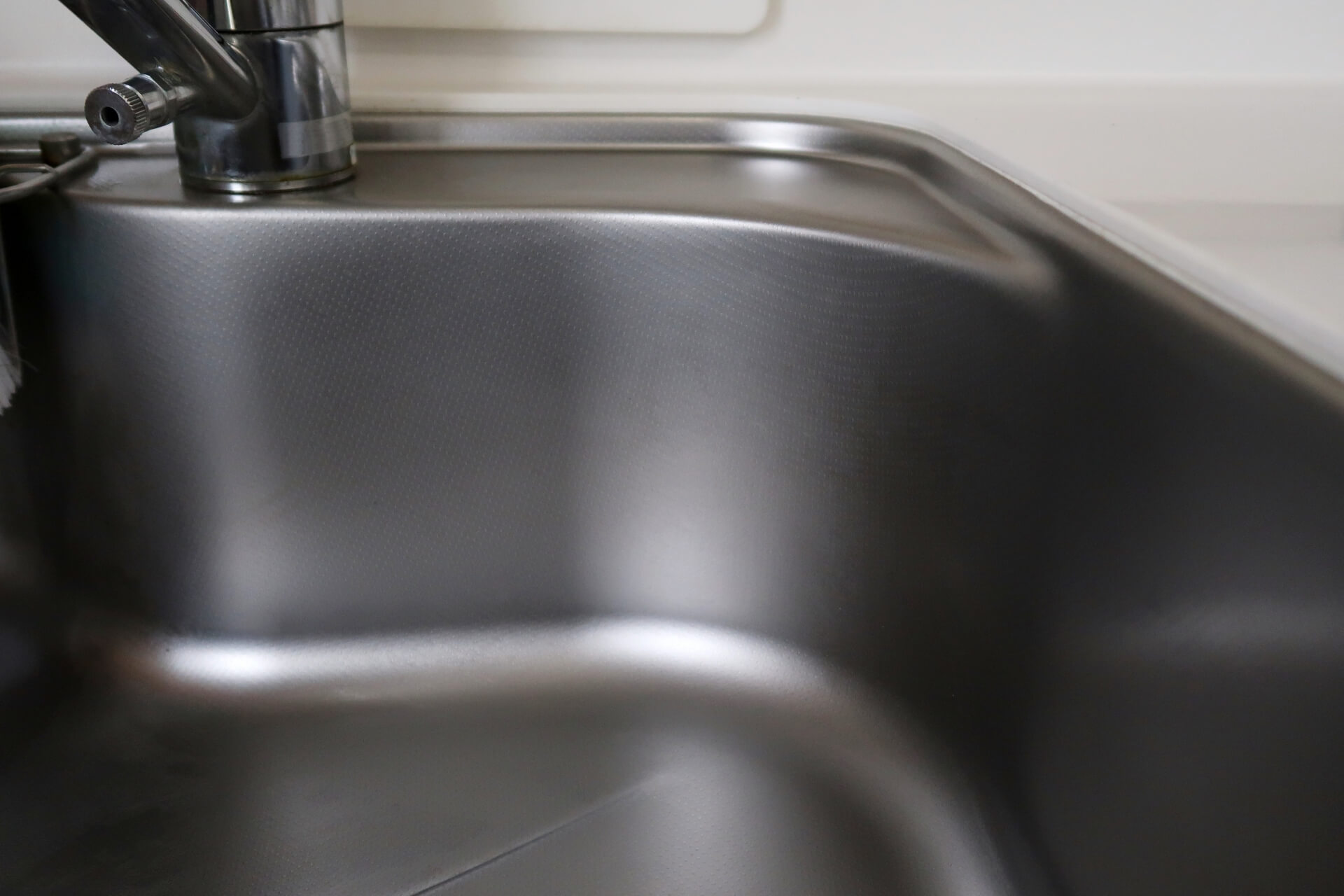
It is no exaggeration to say that stainless steel (stainless steel) is the most familiar metal in our daily lives.
As the etymology of the word "stainless steel" (rust-free steel) suggests, stainless steel is a rust-resistant metal often used around water and outdoors.
Although stainless steel has now been incorporated into many parts of our daily lives, its history is actually not very long, only about 150 years.
Considering that mankind began using iron approximately 3,200 years ago, one can appreciate how short the history of iron is.
The main component of stainless steel is iron, but it is actually an alloy with other metals including chromium and nickel.
But here a question arises. If the main component of stainless steel is iron, this would contradict the rust-resistant properties of stainless steel.
Why is stainless steel rust-resistant?
Stainless steel is an alloy made by mixing chromium and nickel with iron, the main ingredient, to improve corrosion resistance and strength.
Chromium in stainless steel is highly reactive with oxygen and oxidizes before iron to form a film.
This oxide film, which is as thin as 1 nanometer, protects stainless steel from rust, making it rust-resistant.
Stainless steel is not magnetic?
General stainless steel is not magnetic. Huh? You may be thinking, "That's strange for a metal...".
In fact, the nickel in stainless steel acts to make it less magnetic.
This is a problem of nickel in stainless steel, so of course certain types of stainless steel, such as SUS430, which does not contain nickel, will stick to a magnet.
*Stainless steel is called "SUS (Steel Special Use Stainless)" and SUS〇〇The stainless steel designations are set up in the same way as the zeros.
Advantages of stainless steel
・ Highly resistant to corrosion (rusting) Can be used for items exposed to relatively harsh environments, such as outdoors and around water
・ High heat resistance
・ Low thermal conductivity
Stainless steel is often used for the inner walls of water bottles and pots, not only because of its high heat resistance, but also because of its low thermal conductivity (heat resistance = excellent heat retention).
Disadvantages of stainless steel
・ Inferior in heat dissipation
It retains heat easily and cannot be used on engine parts or other parts that are subject to heat.
・ Hardly conducts electricity
・ Difficult to process
Stainless steel is sometimes described as a difficult-to-machine material because it is difficult to release machining heat during polishing, which puts a strain on tools.
3. Is aluminum difficult to polish? Advantages and disadvantages of using aluminum

The most familiar aluminum product is probably the one yen coin.
In fact, the 1 yen coin is made of pure aluminum with a purity of over 99.90%.
While high purity aluminum usually has excellent electrical conductivity and workability, its industrial use has been limited due to durability issues.
Pure aluminum like the one yen coin is very rare.
Pure aluminum is not very strong, but as with iron, strength can be adjusted to some extent by mixing with other metals.
Advantages of Aluminum
・ Lightweight
The products have a very light image, don't they?
In fact, it is a much lighter material, weighing approximately 1/3 of the same volume of steel.
In recent years, aluminum's lightweight properties have attracted attention for its use in portable home appliances and aircraft components.
・ High electrical conductivity
The electrical conductivity (ease of conducting electricity) of aluminum is about twice that of copper of the same weight.
This feature has led to its adoption in many power transmission lines and other electrical wiring.
・ Corrosion resistance
Aluminum combines with oxygen in the atmosphere to form a passive oxide film. The oxide film shuts out oxygen and moisture, providing excellent corrosion resistance.
・ High thermal conductivity
The thermal conductivity of aluminum is about three times that of steel.
It also has excellent heat dissipation properties and is often used for engine parts.
・ Not magnetic
Aluminum is used in products in a variety of fields, from medical devices to mechatronics equipment products, due to its property of not being affected by magnetic fields.
Disadvantages of aluminum
・ Not strong
It is softer than other metals and has the disadvantage of being easily scratched.
・ Difficult to weld
Aluminum is not suitable for welding because it has a low melting point and is difficult to handle.
4. Offers the best abrasives for polishing iron (carbon steel), stainless steel, and aluminum!
In metal polishing, the most common method is machine polishing with a cloth belt.
Recommended products for polishing iron (carbon steel) and aluminum:DAXB(Sankyo Rikagaku)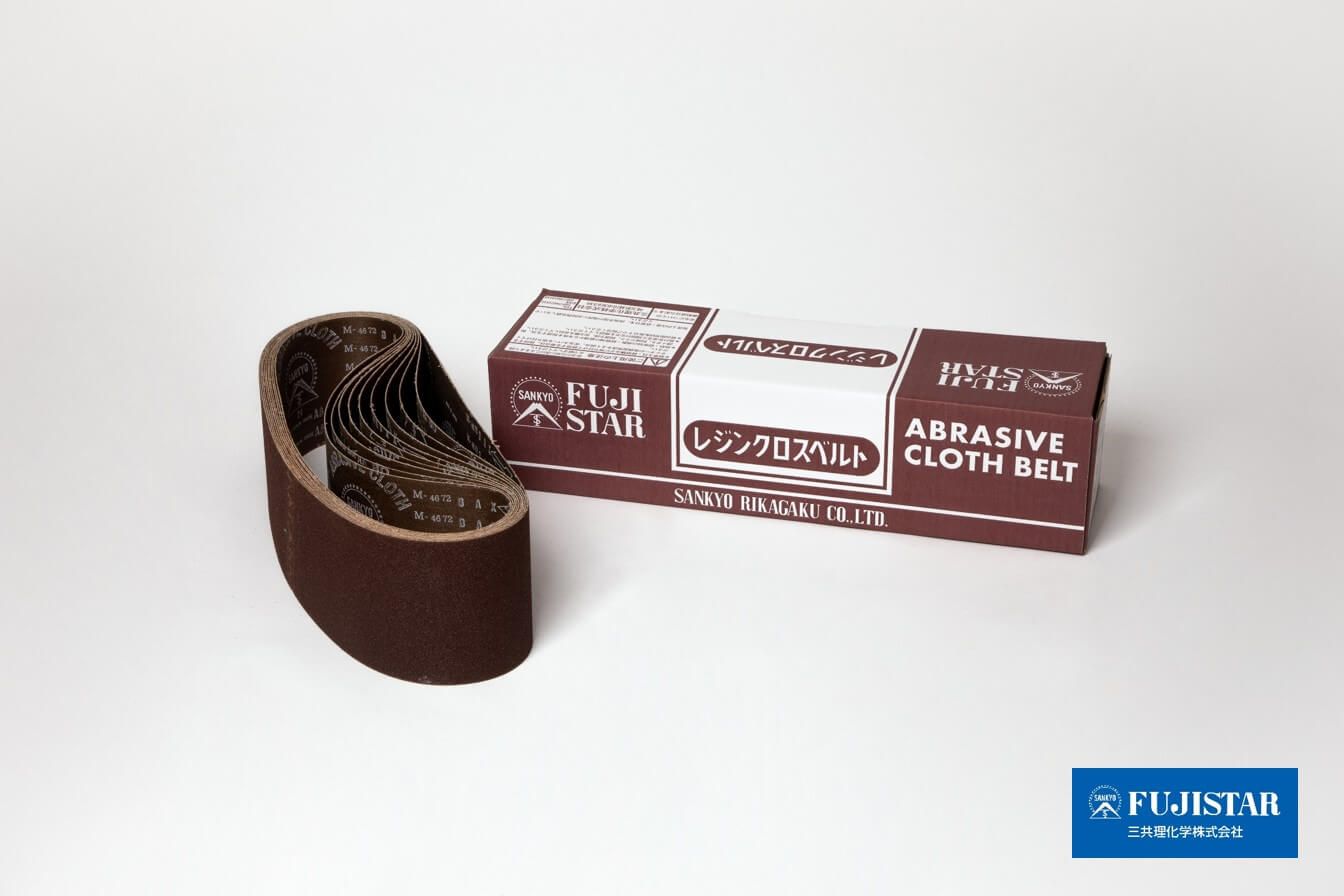
We can grind and polish a wide range of materials from general metals such as iron (carbon steel) and aluminum to copper alloys, brass, glass, and stone.
Recommended products for polishing stainless steel:TZXB-MT(Sankyo Rikagaku)
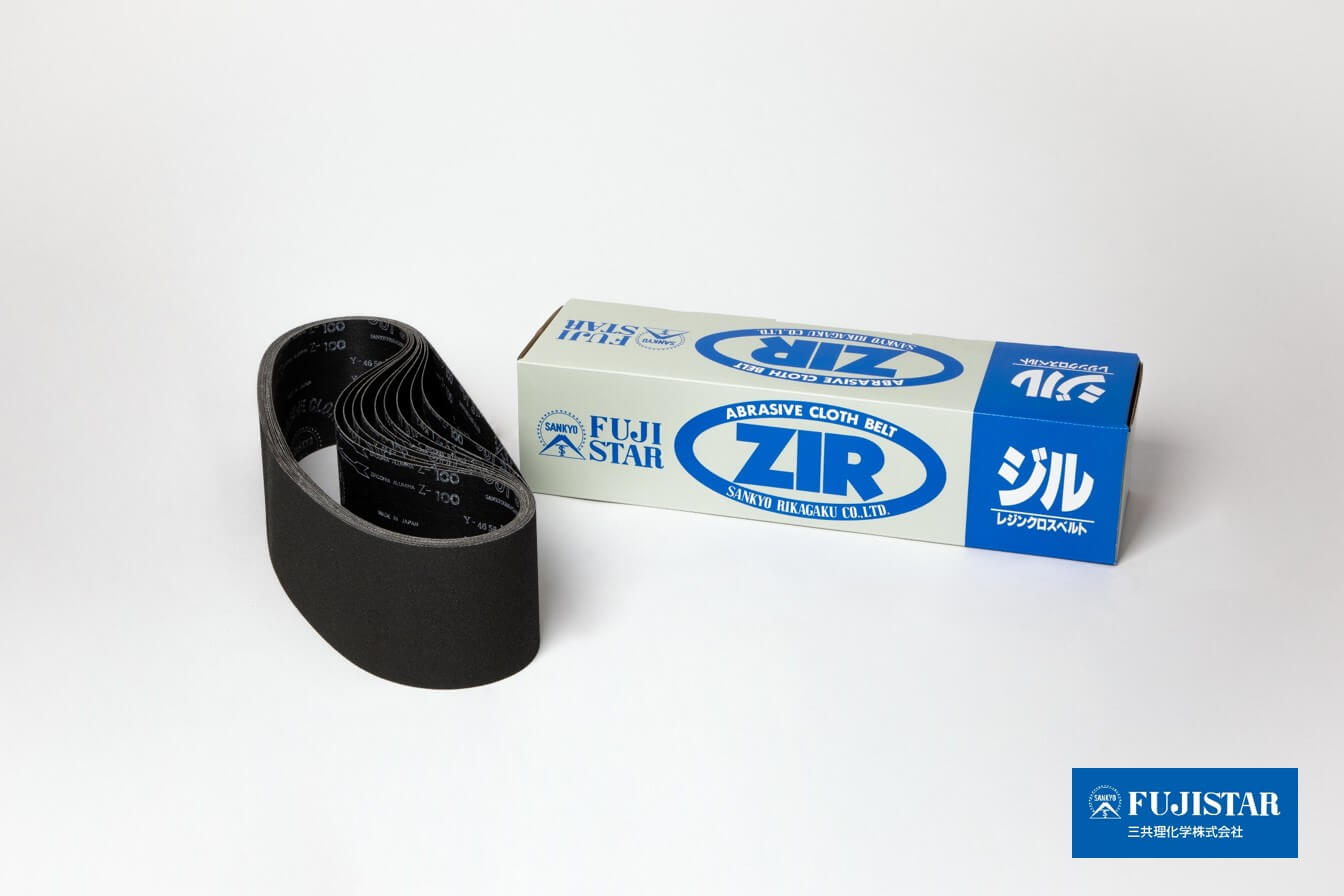
High-performance abrasive grains are used, making it ideal for working with stainless steel and other metals that are prone to welding.
5. Let's understand the characteristics of metals and grind more comfortably!
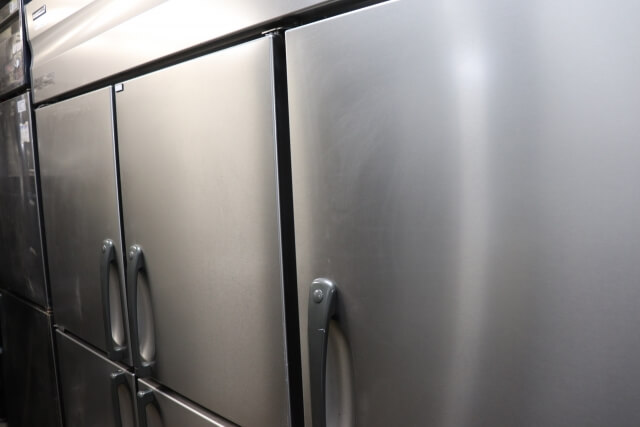
In this issue, we introduced the characteristics of each type of metal and the best abrasives for polishing.
In metal polishing, a cloth belt is generally attached to a tool or machine.
Since a large amount of force is applied during polishing, abrasives must also have a certain degree of durability.
When selecting an abrasive, it is necessary to consider not only its finish and polishing performance, but also its safety.
Please feel free to contact Sankyo Rikagaku if you are interested in selecting the right abrasive for your metal.
